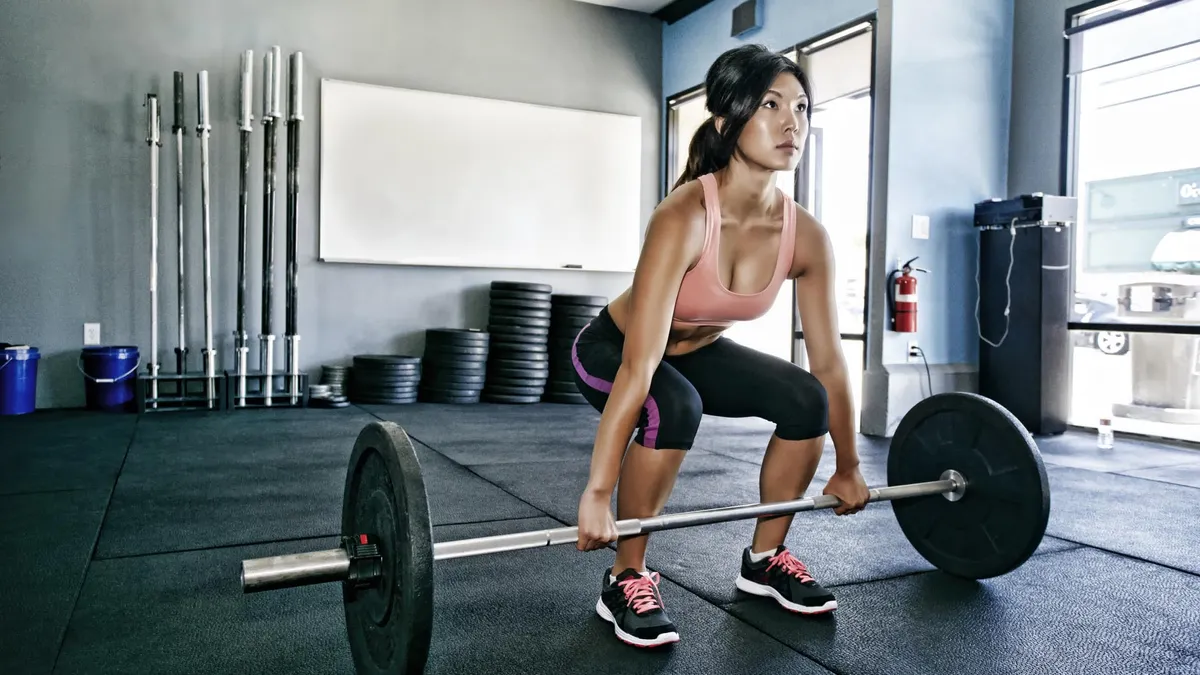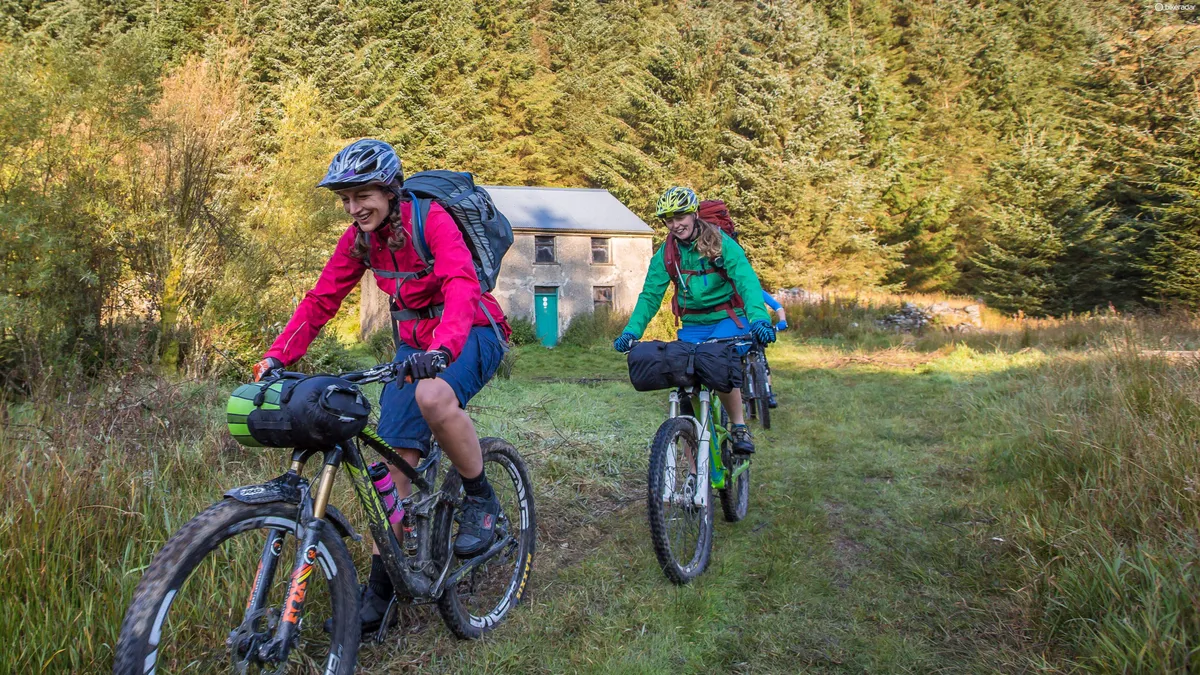When the nights draw in, the rain falls hard and the temperatures plummet, getting those winter miles in on the mountain bike can be the furthest thing from your mind — especially when life is super busy
Lay the groundwork now though and you'll reap the rewards later. To help you out, BikeRadar spoke to pro athletes and fitness professionals to get the lowdown on how to maximise training when you don't have the time (or motivation!) to spend long hours out on the bike.
“It’s hard for me to comment on how to survive British winter training,” says pro endurance mountain biker Sally Bigham, helpfully. “I go away every winter to train in warmer climates.” Unfortunately that’s just not a reality for most of us, and while some might be happy to let their fitness slide during the winter months, for many committed amateurs winter is the time when next year’s goals come into focus and the foundation stones for specific improvements need to be laid down.
But the ideal for winter base miles — long and slow and often on the road – and building up the ‘base of the fitness pyramid’ is hard to achieve when weather, daylight and family commitments interfere. And that’s not even taking into account the lure of the pub lunch/open fire/red wine combo.
So having picked the brains of Bigham, Ironman world champion Chrissie Wellington and experienced sports physio Charlie McCall, we bring you the BikeRadar expert guide to winter training survival:
1. Quality is key

“I can’t tell you how many hours you should train, but I can tell you that the quality trumps quantity every time,” quips Chrissie Wellington.
Bigham agrees. “If I were time-crunched and spent the winter in the UK then the focus would be on interval sessions,” she says. So forget base miles if you can’t achieve a full season of steady riding and a spring of gut-wrenching speed sessions. Instead, get on the bike in short bursts as and when you can, but make every ride count.
Bigham has some specific advice on what to do: “I'd focus on training all heart rate (or power) zones throughout a seven- to 10-day period, followed by a rest and repeat. So, throw in some tempo rides of a few hours, some sub-threshold sessions — like 20-minute intervals at a fast pace within a one hour ride, some rides with two lots of those 20-minute intervals, some with three or four lots of 10-minute intervals at an even faster pace, and even some with several short but maxed-out five-minute bursts”.
Mix it up but make it count. Twiddling the pedals, or “ironing your Lycra”, as Wellington puts it, does not a faster rider make!
If you aren't familiar with heart-rate training then our guide will help, and we've also got a handy video to help you work out your zones.
2. Cheat with weightlifting

We're as enthusiastic about knobbly-tyred fun as anyone, but there are days when the sun never seems to quite rise, and even we can’t be tempted on our bike. But that doesn’t mean there aren’t gains to be made for the following year’s riding.
According to sports physio Charlie McCall, too few cyclists make use of weight training to support their riding. “Lifting weights is a key part of a track rider’s repertoire but under-utilised by mountain bikers,” she explains. “Spend some bad weather days in the gym getting your glutes really switched on and firing with some simple weighted squats, or by doing some lunge walking exercises clutching a kettlebell at chest height. You’ll really notice the difference come springtime, when seated hill climbing suddenly feels a lot easier.”
McCall suggests two weights sessions a week can make all the difference. “Focus on the big glute and quad muscles but don’t neglect upper body exercises like bench pressing because mountain biking is an all-body sport. Keep things simple and build up to lifting as heavy as you can safely and with good technique. And you don’t need lots of reps, so it’s very time efficient!”
Get some more helpful weightlifting tips with our resistance training for cyclists guide.
3. Race yourself fit
Chrissie Wellington might be retired but you can see how much she loves a competition by the glint in her eye when she talks about racing. “Racing is always a great, effective way to train,” she offers, “so enter some races to keep your motivation and effort levels soaring over winter.”
Races don’t have to be official or expensive, either. Wellington advocates “hammering up all of the hills and chasing your mates any time you’re out on the bike – cruise the fire road but let the local singletrack be your race track”.
Maybe it’s time to rekindle your relationship with Strava. Use the feedback to track your progress and get competitive with other local riders.
If you do have to take to the turbo trainer, then you might be interested to hear that Strava has teamed up with Zwift last year to make the whole thing a little more fun.
4. Eat well

With Christmas featuring heavily in the calendar, winter might be a time for indulgence and no one is suggesting you pass on the treats entirely, but an 80-20 rule towards good nutrition can make all the difference for maximising fitness gains and speeding up recovery. That means 80 percent of your intake should be healthy and lean, leaving you 20 percent for spoiling yourself.
Wellington and Bigham say they're all about eating ‘real food’. “Gels and shakes have their place,” notes Wellington, “but day to day it’s important to simplify eating and focus on eating nutritious ‘real food’. Certainly my mantra is to avoid processed junk, even that which is marketed as ‘fitness food’. Pouches and packets with thousands of ingredients on the back are rarely ‘real food’."
Save your pocket and stick to natural ingredients with an emphasis on quality protein and lots of vegetables. You’ll stay leaner, ride harder and recover more quickly.
Not sure what to eat, when or how much? Dr Kevin Currell has some simple nutrition advice to help.
5. Rest and recover

Winter is inevitably going to be a time when your riding is punctuated by ‘rests’, but whether they are due to rain or family commitments this can be A Good Thing if you’re being clever about the riding you are managing to squeeze in.
Sally Bigham is at pains to emphasise the importance of relaxing. “Resting is when the body recovers and gets stronger," she says. "Without the rest, the benefits of training won't be realised.” So the key is to make every ride count and then see the gaps between sessions as important and useful — rather than wasted — time. This is when you get stronger.
"Athletes rarely recover enough between sessions,” admits McCall. “I know it’s a cliché but it really isn’t about training hard, it’s about training smart.” So when it’s time to stay indoors watching a film, or go out for walks in the woods with the children, just remember that this relaxation is also contributing to your fitness gains.
If you're beginning to feel sick or tired, check out our guide on when to ride and when to rest.
6. Give fat biking a go

If your favourite trails are often buried under a thick layer of snow, consider adding a fat bike to your stable. Not only will it allow you to ride outside rather than spin away indoors, it can help you learn new skills such as wheelies, drifting and cornering in a low risk environment. What's the worst that could happen — you wind up falling into a snowbank?
Best of all, fat bikes are fun, which is just what you might need after a long season of serious training.
7. Enjoy it!

Mountain biking, for most of us, is a hobby. Although we might have racing goals that are important, even fairly central, to our lives, it’s important to not let these goals eclipse the main purpose of our riding, which is to have fun. Mountain biking is playtime.
Wellington is all about not getting stressed by training: “A hobby should bring you joy rather than stress or anxiety," she says. "So focus on what you can do — perfection is doing your very best in the context of your life.”
There will be days when you’re tired, or not ‘feeling the flow’, or don’t feel you are making any headway. These days might be more common in the depths of winter, but celebrate what your body is capable of doing today, rather than focus on the shortfall to the ideal you. Any day you ride your bike, for however long and however well, is a good day.
Ultimately let’s remember that being a fit and ‘well-trained’ mountain biker is about maximising the fun to be had razzing the trails. It’s about soaking in the views from the top of a killer climb, feeling the rush of adrenaline on well-earned long, twisty descent or buzzing your friend’s tyres just because you can.
Take a moment to think through your approach to the next few months and see if you can’t come back stronger, fitter and leaner next spring, but without the bane of long, lonely road rides.